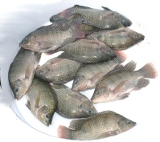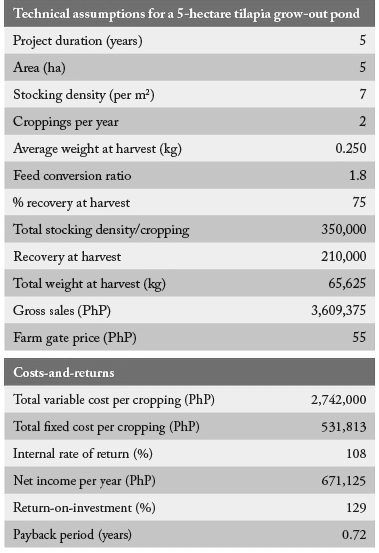Known as the “aquatic chicken,” the TILAPIA is a poor man’s fish that grows fast and breeds easily in captivity. It is considered as one of the easiest fishes to culture. It is also relatively tolerant to a wide range of salinity & temperature levels. Moreover, farming tilapia requires minimal inputs.

TECHNOLOGY PROFILE
The most widely used system for growing tilapia to marketable size is earthen ponds. Pond size ranges from 100 m2 to 10,000 m2 having a depth of 1.0-1.5 m. Three culture methods may be done in pond grow-out: (1) extensive system wherein periodic application of fertilizer is done to promote growth of natural food on which the tilapia feed; (2) semi-intensive system which uses tilapia feeds in addition to natural food; and (3) intensive system where tilapia feed solely on tilapia feeds. To prevent pollution in the intensive system, proper water management should be observed.
Tilapia Grow-out in Ponds
1. Prepare the pond by sun drying the pond bottom and applying lime to stabilize soil and water pH. Lime is unnecessary when soil pH is above 7.5 and the alkalinity of the pond water is above 50 mg/liter of CaCO3
2. Stock 1-2 fingerlings/m2 for extensive systems, 3-4 fingerlings/m2 for semi-intensive systems, and 5-10 fingerlings/m2 for intensive systems
3. Feed fingerlings with tilapia feeds daily at 2-3% of the total fish biomass in semi-intensive systems and at 3-5% of the total fish biomass in intensive systems
4. Harvest tilapia when they reach the market size of 150-300 g from 4-6months.
Financial Indicators

For more information, visit:
Southeast Asian Fisheries Development Center
AQUACULTURE DEPARTMENT
www.seafdec.org
© SEAFDEC/AQD 2009
